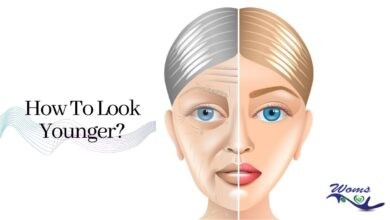How to Sleep with Piriformis Syndrome?

Piriformis syndrome is a painful and draining long-term condition in which sleep can feel like the only way to escape the day’s pain. But it’s also hard to sleep with a tight piriformis muscle.
Only someone with piriformis syndrome can understand how hard it is to live with this long-term problem. If you have Piriformis syndrome, it can make it hard to sleep. You won’t be able to sleep because of the pain and aching in your lower back, lumbar, buttock, and leg.
Learning how to support your back and hips with piriformis syndrome can help you sleep better and feel better while you rest. Here are some things you can do to feel better and sleep well.
Sleeping Positions
Compression of the sciatic nerve, common when lying down, can exacerbate existing problems. The most excellent piriformis syndrome sleeping postures keep your spine in optimal alignment while allowing you to sleep well.
The issue is that not everyone has the same idea of a comfortable sleeping position. To help you better manage your piriformis syndrome, we’ll go over the various sleeping positions and explain how to adjust them to your unique needs.
If you sleep on your back
Your knees may need to be elevated. Piriformis syndrome is often accompanied by nighttime hip pain, which may help alleviate some of the discomforts. When appropriate, a wedge pillow or a rolled towel under your knees will help alleviate any discomfort.
Adding a smaller, thinner pillow directly beneath the lumbar curve of the spine can help provide additional support and alleviate strain in the painful areas if you have lower back discomfort when sleeping on your back.
When sleeping on your side
Because of piriformis syndrome, your hips need to be cradled appropriately to alleviate discomfort. When you sleep on one side, it may be preferable to invest in a new mattress for hip discomfort that contours to the contours of your body.
It’s also possible to place a pillow between your knees. Hip and pelvic alignment can benefit from this. As a result, less pressure may be placed on your sciatic nerve, reducing your discomfort.
When you sleep with your upper leg propped up on the pillow rather than letting it fall to the mattress or the other leg, you can reduce the risk of waking up with a hunched back. Your spine will be properly positioned as you sleep, which may lessen your back pain.
If you are a stomach sleeper
It would be best if you reconsidered your decision. The problem is that sleeping on your stomach puts too much tension on your spine. It curves far more than is necessary, potentially causing extra pain.
Furthermore, sleeping with your head inclined to the side twists your neck. It causes misalignment of the entire spine and can cause strain in some back regions. As you can expect, pressure building frequently results in higher discomfort levels.
As a result, switch up your sleeping arrangement if at all possible. Put a tiny pillow under your abdomen if you can’t learn to sleep in a new way. You can use this to counteract the excessive curvature of your back and keep your spine in a more healthy, neutral position.
Reclined Sleeper
This is a good alternative if you want to sleep in a reclining position. Pillows or a bed wedge pillow can support your upper body as you sleep in a reclined position. If that doesn’t work, a reclining chair is the best option.
Note: When possible, try to sleep on your back. Because it’s beneficial for sciatica pain, it may work for piriformis syndrome. It’s terrific news if you have a reclining chair or an adjustable bed frame. If the smaller one does not work, a more oversized wedge pillow for reclining sleeping is an option.
What Is Piriformis Syndrome?
Piriformis syndrome is caused by inflammation of the sciatic nerve caused by the piriformis muscle. Piriformis syndrome is a common cause of tingling and numbness at the back of the leg. In no way, shape, or form is this the same as suffering from sciatica.
Sciatica patients’ pain signals travel through the nerve, but piriformis syndrome patients’ pain signals originate in the muscles.
In many circumstances, the root of the problem is unknown. Several factors can cause piriformis syndrome
- A sacroiliac joint or hip soreness may occur in addition to piriformis muscle pain.
- Injury
- Inadequate development or positioning of the sciatic nerve or piriformis muscle
- Incorrect spinal alignment
- Leg length variation
- Prior hip surgery
- Morton’s neuroma, among other foot ailments
The Right Mattress
To control your piriformis syndrome discomfort, you need a good night’s sleep, starting with the bed.
Sleeping on a filthy mattress can cause or exacerbate lower back discomfort by repeating wrong sleeping positions, straining muscles, and not keeping the spine aligned. No bed will function for everyone with piriformis syndrome. The right mattress can help alleviate back pain and enhance sleep quality by ensuring that your spine is aligned correctly.
It has been shown that a medium-firm, individually-inflated mattress is optimal for ensuring proper spinal alignment and comfort during sleep. Support and padding/comfort are important factors to consider while shopping for a mattress.
Think about the mattress’s inner construction when it comes to supporting it. One’s preferences, height and weight, and sleeping style affect how much support is ideal.
Pillows Types, Shapes, and Positions
Choosing the right pillow can have a significant impact on back discomfort. Selecting the appropriate cushion is essential to avoid neck and back pain and reduce stress on your body.
Back pain patients should use orthopedic pillows instead of memory foam and goose-down or feather-filled pillows.
While there are numerous orthopedic pillows, the optimum depends on a person’s sleeping habits, height, and weight. Using various contour designs can also change the amount of support and comfort.
The following are the ideal pillow kinds for various sleeping positions:
- Back sleepers: Place a medium-thin pillow behind your chin for support. Use a cervical pillow and one to two pillows beneath the knees for the best support and even weight distribution.
- Side sleepers: For optimal spine alignment, use a medium-thickness head pillow and a pillow between your knees. Body pillows can also provide comfort and support for side sleepers.
- Reclining sleepers: Keep your head and knees raised using pillows like wedge cushions to alleviate pressure on your lower back.
- Stomach sleepers: Do not sleep with your head on the floor or a thin pillow. Instead, find other ways to rest your head. Place a pillow under the abdomen to prevent the spine from forming a U-shape.
How to Sleep with Piriformis Syndrome Better- Extra Tips and Tricks
Changing your sleeping posture may not be adequate in some cases. Each scenario is unique, and you may need to go through some trial and error to find a solution that works for you.
Tips and strategies by the best mattress advisor for dealing with how to Sleep with Piriformis Syndrome.
Consult your doctor.
This is the most critical action you can take. However, many people prefer to diagnose and treat their pain independently rather than rely on a medical professional. However, only a trained specialist can tell you what you’re dealing with.
In addition, your doctor can provide you with pain-relieving strategies tailored to your unique situation. Piriformis syndrome necessitates more aggressive treatment (painkillers, physical therapy, or surgery).
Consider gentle stretching, especially before bed.
Particular stretching exercises can relieve tension in the piriformis muscle, relieving pressure on the sciatic nerve. Your sleep may improve due to the piriformis muscle becoming more relaxed. Don’t forget to be patient with yourself. These muscles might get irritated and inflamed if you overstretch.
Get a new mattress.
Getting rid of your old mattress is the most delicate thing you can do to ensure a good night’s sleep. When it comes to piriformis syndrome, the quality of your bed can make or break your experience.
Look for mattresses advised by chiropractors that help keep your spine in optimal alignment and alleviate pressure points (here are a few examples of quality models).
Take a warm shower before sleep.
Your muscles, particularly the piriformis, which may pull on the sciatica nerve and give you pain, may relax more quickly if you soak them in warm water. A warm shower at the end of a long day can help you wind down for the night. It may help you relax and fall asleep more quickly after a long day.
Apply cold packs.
You should use cold packs to the hurting areas of your body if you’re experiencing pain as a sign of inflammation in your body. If you don’t have any gel ice packs handy, you can use any frozen item from your refrigerator, wrap it in a towel, and apply it gently to spots on your body.
Try yoga or self-massage.
Both can help you relax your stiff muscles and decrease pain. It’s essential to be very kind to yourself, though. Being overly aggressive in your massage or yoga practice isn’t necessary. Relax the piriformis muscle by focusing on your thighs and gradually opening them.
Get the right pillow.
Regarding appropriate spinal alignment and tension reduction, your pillow, like your mattress, plays a significant part. Back sleepers should look for a pillow with a medium-sized loft. A tilted head or a bent backward head are not good postures. It must be parallel to the rear.
People who like to sleep on their sides should use fluffier and firmer pillows. While the top and crown of the mattress are stuffed, it is essential to have a place to rest your head. A thin and soft pillow is necessary for stomach sleepers. To avoid the formation of negative curvature in your neck, it should not support your head too much.
Conclusion- Try Multiple Techniques
Piriformis syndrome, called a deep gluteal syndrome, extra-spinal sciatica, or wallet neuritis, causes buttock pain, spasms, numbness, and tingling. Piriformis syndrome is a severe musculoskeletal disorder.
With Piriformis syndrome, many unpleasant symptoms severely disrupt one’s ability to sleep peacefully and comfortably.
When healing from piriformis syndrome, it is best to sleep upright. This aligns the spine and gives the upper back, shoulders, lower back, and hips the most support. Sleeping on your back, side, or laying down can help with Piriformis syndrome.
You should avoid lying on your stomach because it puts excessive stress on your joints, muscles, and belly, which can cause pain and bad posture.
You may want to add gentle targeted stretching into your daily routine and avoid aggravating your symptoms as much as possible to improve your sleep quality.
To correctly manage piriformis syndrome medically, you must rigorously follow your prescription.
Various ways to provide immediate pain relief include topical and oral drugs, particular stretching exercises, and piriformis cross-leg stretches.
Your doctor and physical therapist can advise you on whether or not you should combine your medical treatment with massage therapy to help your body’s active repair mechanisms.
You must get medical help as soon as possible to avoid complications or adverse outcomes.




